Once upon a time the Victorianna had a pretty peach bathroom. This was the first room I finished (four years ago!) and I was really happy with it. The tiles were from Elf Miniatures and I loved the color.
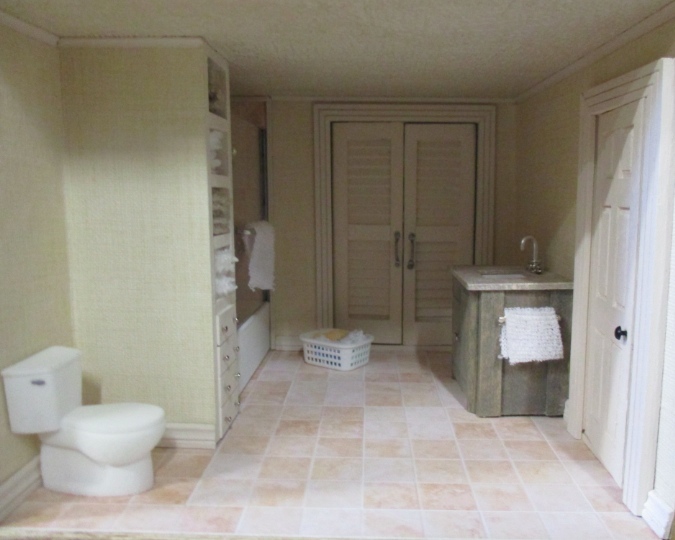
Fast forward a year. About six months after moving into our new house in San Francisco, I noticed the floor tiles had become discolored. The Victorianna had been sitting in the garage with sunlight shining on it through a window, and it hadn’t occurred to me until it was too late that this might cause damage. I suspect the tiles were ink jet printed.
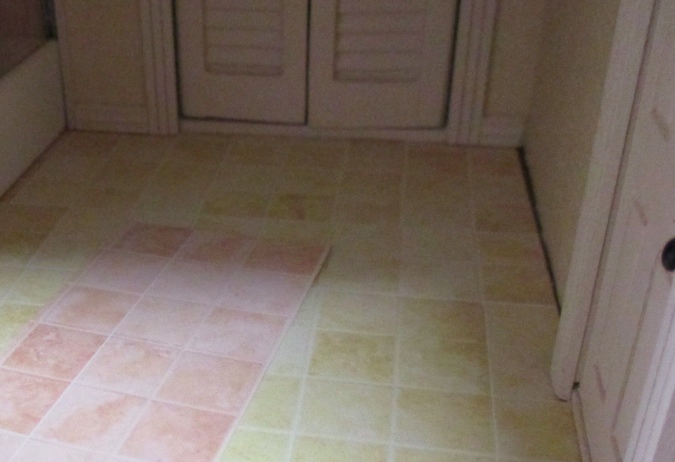
Only the floor was faded — the shower surround still looked okay. I replaced the flooring with a plastic sheet of hex tiles and hoped the shower tiles wouldn’t fade since they were tucked back in a corner.
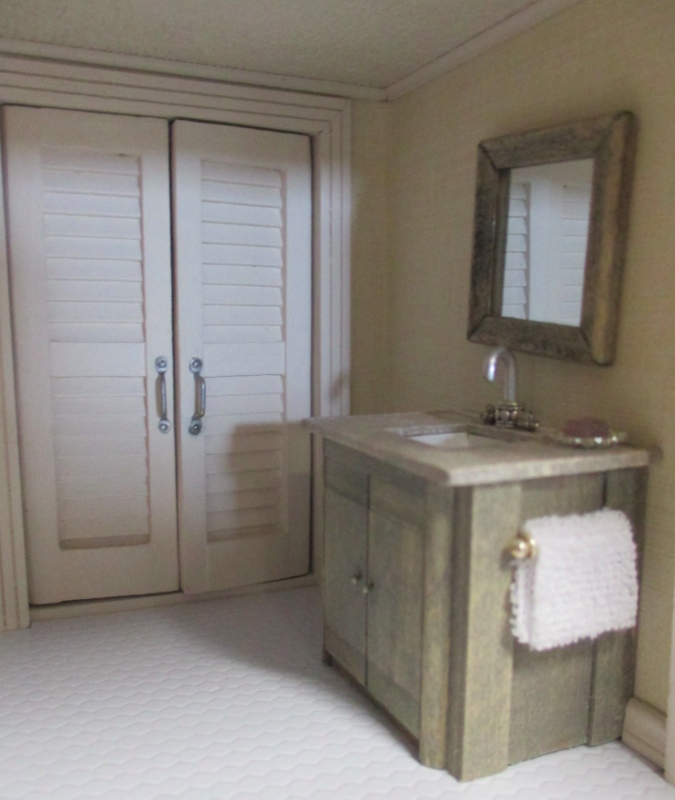
No such luck. It started with the upper right corner and gradually spread. With the house is almost finished, I didn’t feel good about leaving the bathroom in this state. And after fixing a similar, much more complicated issue in the Queen Anne Rowhouse, I figured if I could fix that, I can fix anything!
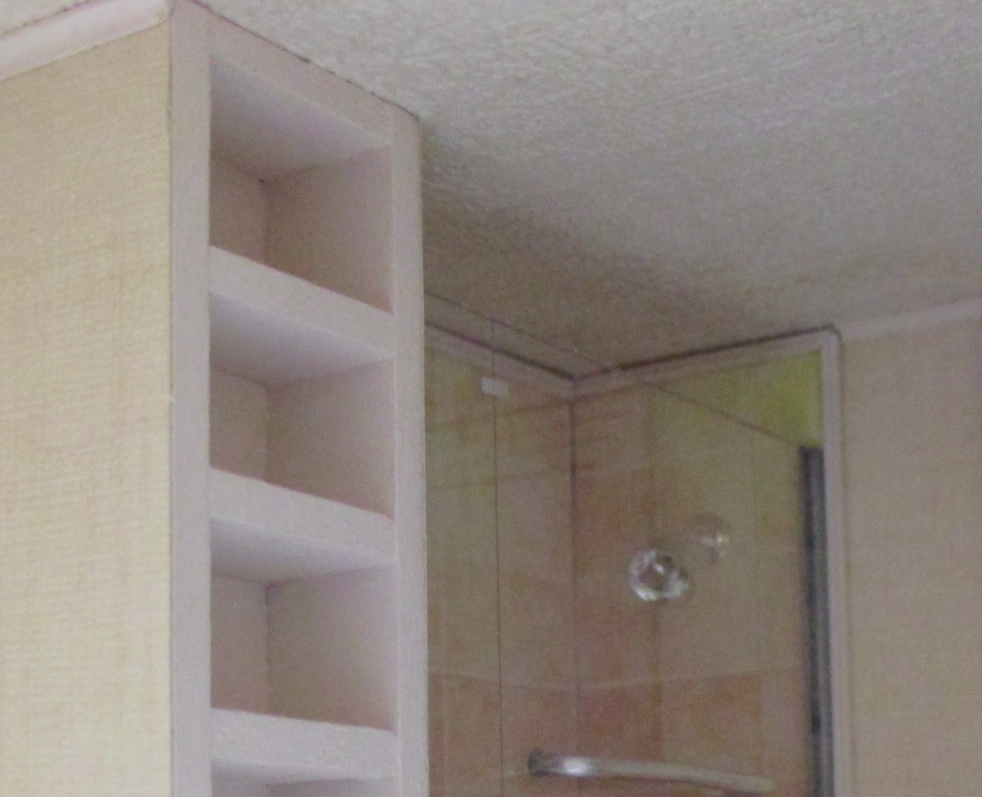
I started by removing the shower door. After a minute or two of unsuccessfully trying to pry it off, I got annoyed and punched it with my finger. The channel molding holding it in place broke, and the door fell into the shower. Almost too easy!
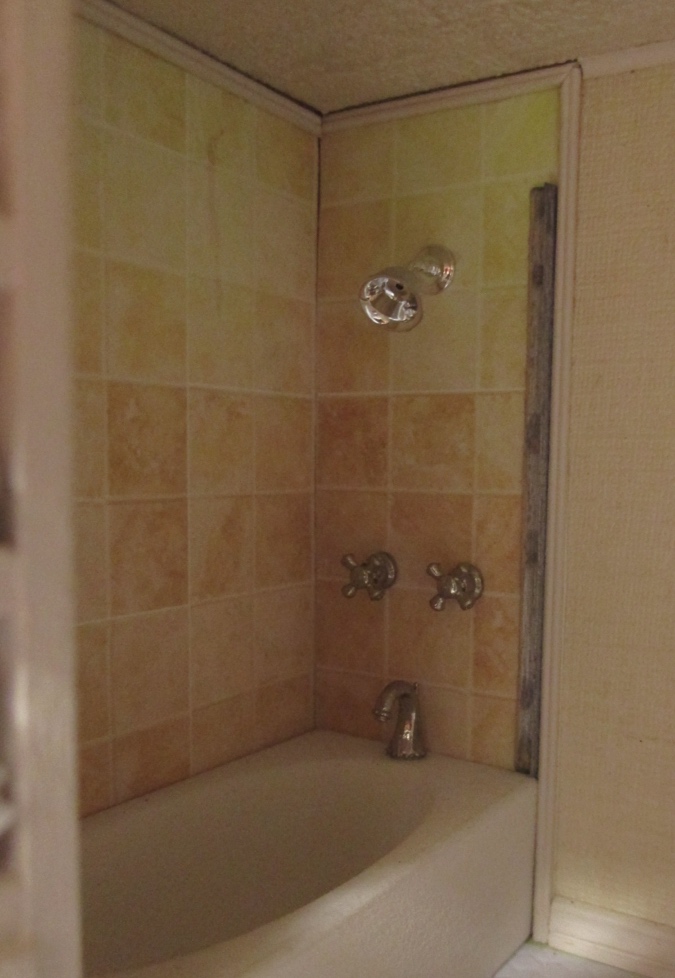
Next I peeled the tile off of the right wall. I was pleased to see I’d had the foresight to wallpaper almost all the way to the wall. This way I didn’t need to worry about a transition between the wallpaper and the new tile.
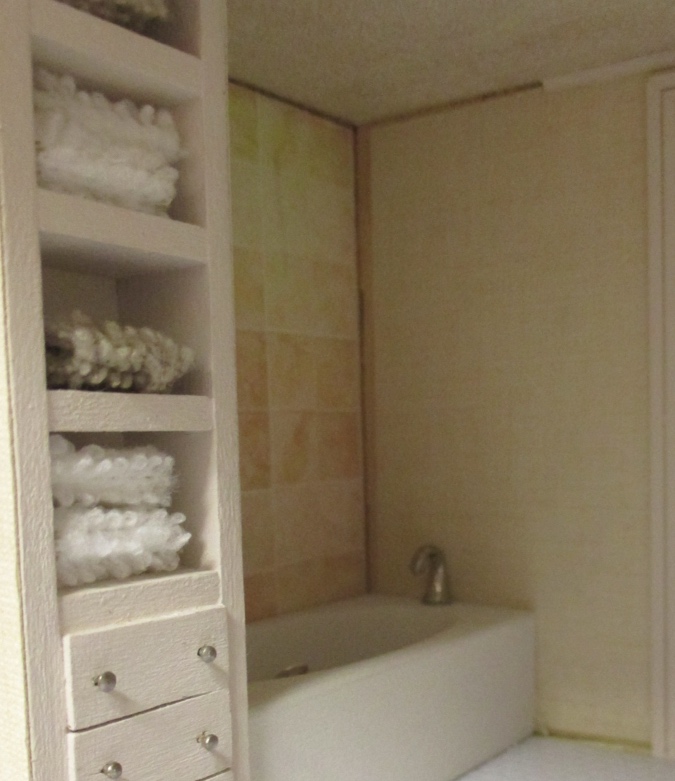
This is the scrapbook paper I picked out for the new tiles.
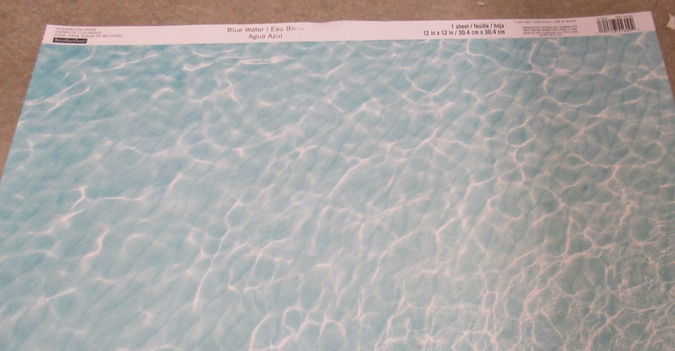
Like with the backsplash, I used 1/16″ thick basswood as the backing, and painted it with my Tuscan Beige trim color to make the grout. Then I glued on the tiny 1/8″ x 1/8″ squares one by one. It took a long time!
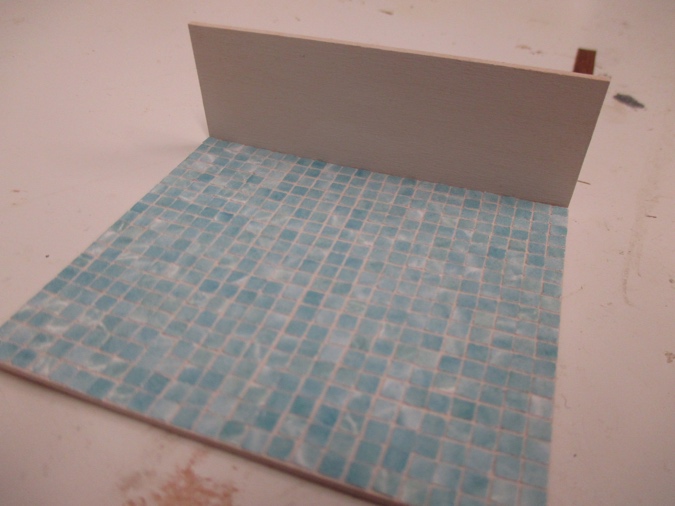





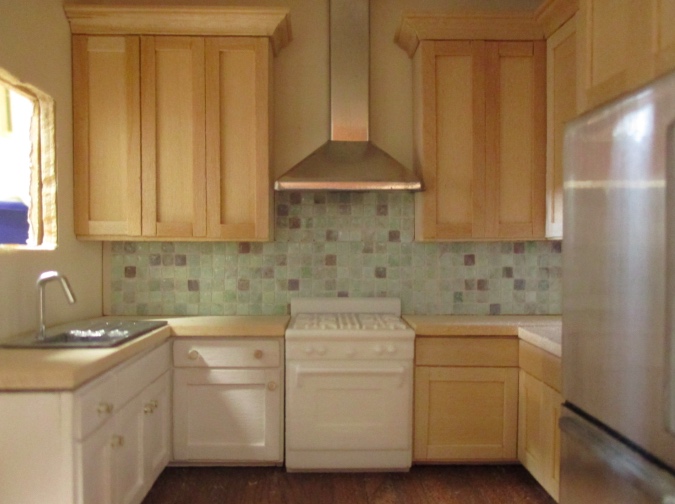






 Emily is a freelance writer, miniaturist, and adventure game enthusiast.
Emily is a freelance writer, miniaturist, and adventure game enthusiast.

